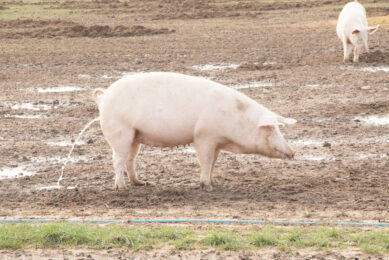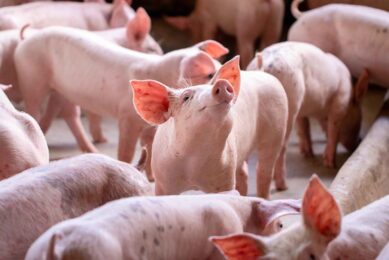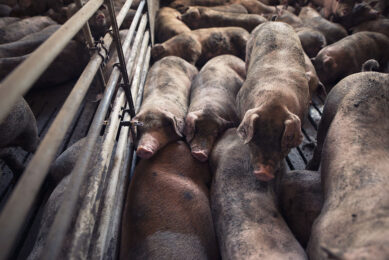Iowa SU researchers: Detecting re-emerging diseases in pigs

Veterinary researchers at Iowa State University are developing improved methods to diagnose a re-emerging swine disease that was essentially a non-issue five years ago but has become increasingly more common since then.
Swine dysentery, also known as bloody scours, is a disease in pigs that causes diarrhoea containing mucus and blood and eventually leads to uneven growth and increased mortality among infected herds. The disease is caused by Gram-negative spirochete bacteria known as Brachyspira hyodysenteriae.
Swine dysentery cost the US pork industry approximately US$115 million in 1994, but improved production methods and understanding of the causes of the disease led to the virtual disappearance of dysentery in the late 1990s. While the exact reasons underlying the re-emergence of swine dysentery are not currently known, the disease reared its head again in recent years, said Dr. Eric Burrough, an assistant professor in the ISU Department of Veterinary Diagnostic and Production Animal Medicine.
Burrough said the ISU Veterinary Diagnostic Laboratory encountered only a handful of swine dysentery cases in all of 2003, but the numbers have increased nearly every year since then. The laboratory identified more than 100 cases in 2011, and 2012 appears to be tracking closely with last year’s totals.
The diagnostic laboratory has received submissions from pigs with clinical swine dysentery from most of the major hog-producing states, including Iowa, since the disease began re-emerging.
Burrough said some possible causes for the re-emergence include changes in feeding practices that impact the intestinal microenvironment in pigs, changing genetics among herds or an emerging co-pathogen along with the bacteria that causes the disease.
Burrough said researchers have also identified a newly emergent bacterial source, currently proposed as “Brachyspira hampsonii,” which shares the genus of the classic swine dysentery bacteria but is not the same species. This newly proposed bacterial species can cause the same symptoms in pigs and is treated in the same way. But one of the fastest diagnostic tools used to identify the classic swine dysentery bacteria, a process known as polymerase chain reaction or PCR, does not detect “B. hampsonii,” which may cause a delay in diagnosis or a failure to diagnose the disease at all if other methods are not used in concert with PCR.
Other diseases can cause symptoms similar to those of swine dysentery, which further increases the complexity of the situation and makes a thorough examination by a veterinarian even more important. Producers who notice grow-finish pigs with bloody diarrhea should consult a veterinarian for confirmation of the disease and to select a proper treatment, he said.
The complications surrounding successful diagnosis of swine dysentery have led faculty at the ISU College of Veterinary Medicine to search for a PCR method capable of identifying both classic and potentially novel strains of Brachyspira without the time-consuming step of culturing the bacteria. The National Pork Board awarded the ISU researchers a grant earlier this year to pursue their work to develop a virulence gene PCR panel for Brachyspira.
“What we’re looking for is a more rapid diagnostic tool to identify both the classic bacteria and potentially novel strains that could cause swine dysentery,” Burrough said. “Until we find a method to screen for virulence with a faster turnaround, culturing will likely remain the most reliable means of confirming a diagnosis of this disease.”
Dr James McKean, a University Professor in the ISU Department of Veterinary Diagnostic and Production Animal Medicine and associate director of the Iowa Pork Industry Center, said Iowa herds are especially susceptible to contamination because roughly 75 % of all hogs finished in Iowa originate from other states, creating an increased likelihood of contamination.
McKean said the good news is that swine dysentery is preventable through biosecurity measures to make sure manure that could be contaminated is cleaned up. He urged producers to be especially careful about sanitizing trailers, regularly changing work boots and making sure not to track home manure when delivering pigs to collection points or slaughter plants. These precautions take time and effort, but they don’t cost a lot of money, he said.
On the other hand, treating a herd that has been infected with the disease can easily become a costly proposition. McKean said treatments typically range between US$6 and US$8 per pig, and a particularly severe strain can lead to steep death losses.
“The bottom line is you don’t want your herd to be contaminated, and you can’t afford it,” McKean said. “There are simple things you can do in terms of managing contaminated manure to avoid this.”
Related website











